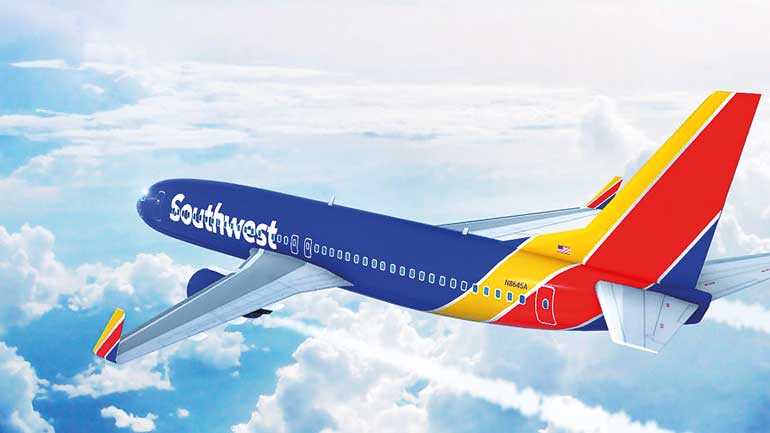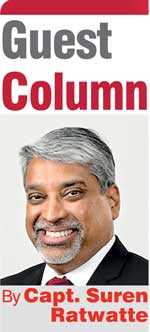Wednesday Dec 17, 2025
Wednesday Dec 17, 2025
Monday, 25 November 2019 00:09 - - {{hitsCtrl.values.hits}}

The business model was invented almost accidentally by Southwest Airlines
Low Cost Carrier, or LCC, is a term used to describe a ‘budget airline’ or ‘low-fare carrier’ which not only emphasises low ticket prices but focuses on minimising its operating costs too.
The business model was invented almost accidentally by Southwest Airlines (ICAO code: SWA), when it was started by the late Herb Kelleher in Texas, USA in 1969. By flying only within the state of Texas, Southwest was exempted from the service and price controls imposed by the US Federal Government.
With the advent of deregulation in 1971, SWA was able to expand throughout the USA. Rather than compete with the giants of the time (United, Delta, American, Pan American and Eastern Air Lines) with their full service models and premium seating, SWA offered a one-class cabin and minimal in-flight service despite the expansion.
Today SWA carries more domestic US passengers than any of its rivals and is one of the largest airlines in the world, with over 750 aircraft in its fleet plus another 276 on order. It has been consistently profitable since its founding, in a market that has seen most airlines enter ‘Chapter 11 bankruptcy’ at least once in that period. 
What are the characteristics of a LCC?
Some of the primary features characterising a LCC are that they usually operate only one type of aircraft (the Boeing 737 in the case of SWA), have a one-class cabin, and offer minimal cabin service. While charging for baggage has become a feature of most airlines these days, Southwest has always allowed two checked-in bags for free.
Most LCCs are privately-owned, and highly-focused on keeping costs low by usually operating point-to-point between city pairs. They tend not to operate a ‘hub’ model whereby passengers transit at a central location and change aircraft.
Operating only one type of aircraft, and buying these machines in larger numbers, is one of the key means by which LCCs control their costs. The simplicity of having all crew members, mechanics and ground-crew needing to be only trained on the one type of airplane makes for huge savings. Most LCCs operate aircraft from the Boeing 737 or Airbus A320 families of aircraft.
The scale of purchases also means that the LCC has a strong negotiating position with airframe and engine manufacturers. For example, Indigo Airlines of India (IGO), now the largest single LCC in Asia, started operations in June 2005 with an order for 100 Airbus A320 aircraft. Today Indigo dominates the Indian market, with over 200 A320s and another 355 on order. Even in a market dominated by high fuel costs, IGO has maintained an astonishingly low cost base, particularly in the maintenance field, by dint of its strong bargaining power.
Where else are there LCCs?
The LCC has become a worldwide phenomenon with this business model dominating the marketplace, particularly in Europe. Ryanair (RYR), a ferociously competitive LCC based in Dublin, Ireland, has become the largest airline in Europe, with more than 400 Boeing 737 aircraft. Headed by the brilliant if controversial Michael O’Leary, Ryanair carries more international passengers than any other airline.
RYR takes the ‘no-frills’ concept to a new level with passenger seats that do not recline, windows with no shades, no free baggage and a legendary focus on minimizing costs.
EasyJet (EZY) runs a close second to RYR in the LCC stakes with over 300 aircraft and a network spanning Europe, controlled by its headquarters in London. Wizz Air (WZZ) is a large LCC dominating Eastern Europe from its HQ in Budapest, Hungary.
SWA still dominates the US market, but many others, notably JetBlue, Frontier Airlines and Spirit Airlines, are tenacious competitors. Canada’s WestJet has established a significant market share, while Azul, Volaris and GOL are large South American LCCs. COPA of Panama has over one hundred aircraft and is very profitable, but operates a ‘hub’ in Panama City and, unlike most LCCs, even offers a premium cabin.
In Asia the Jetstar, Lion Air and AirAsia groups have a large footprint, though they tend to be organized as individual companies based in specific countries.
Are LCCs beneficial?
What is known as the ‘Southwest Effect’ has become a popular characteristic of LCCs. Once a low-cost such as SWA enters a new market, consumers experience much lower fares. This forces the incumbent carriers to lower ticket prices as well. In a short period, the market grows to accommodate many more passengers than before the entry of the LCC, but fares remain significantly less than they were.
This usually means a boost to other support services such as hotels, ground transport, leisure activities, etc., as more people take to the skies. Airport operators benefit by having much better usage of their facilities, and the inherent efficiencies of the LCC model mean that other costs (fuel, etc) do not rise as much as previously.
Ryanair’s CEO O’Leary states very bluntly that his airline intends to serve as many customers as possible at the lowest possible fares. They make profits by filling their aircraft and from ancillary revenues on baggage, meals, drinks, etc. that are not essential to transportation.
As Herb Kelleher of SWA said, “Our competitors are not other airlines, but the trains and buses that most people use. Our target passengers are not business people, but ordinary folks who need to get somewhere safely, quickly and comfortably, at an affordable price.”